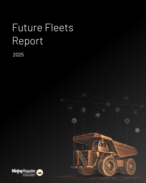“The move to longer shifts and concentrated shift rosters has resulted in an increase in families living in coastal areas and a change to the social arrangements of small mining towns throughout the state,” Palaszczuk said yesterday.
“As a result, fatigue is becoming a growing problem with tired miners travelling to and from work after a long shift cycle.”
“We need to ask if this is acceptable or sustainable in the medium to long term.”
Palaszczuk also reflected on recent events in the United States, stating they reminded “us of the dangers of underground coal mining and are a reality check that we cannot and should not ignore.”
He said while the Australian underground coal mining industry has not had any of the headline-grabbing disasters or trapping of miners such as the recent events in Tasmania, the sector needed to remind itself injuries still occur in Queensland.
“The attainment of our common goal of ‘zero harm’ continues to be a dream and not a reality.”
Palaszczuk also said the top coal caving trial in New South Wales had caught his attention.
“Any new technology which improves recovery rates of coal and, ultimately, volumes of coal being exported, will be of considerable interest to Queensland operators, where we have the thickest of coking coal seams,” he said.
“It’s a wonderful two-way partnership: you can teach us ways to reduce wastage and improve efficiency in our coal fields and we can teach you how to play rugby league.”
He said the project had the potential to be a win-win situation.
























